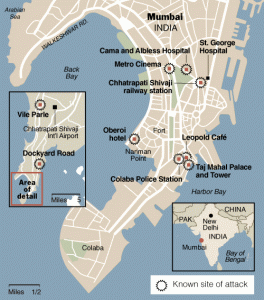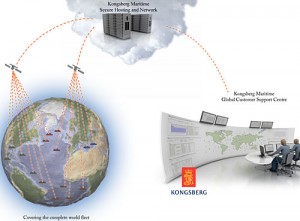 The U.S. Navy’s Information Dominance Corps (IDC) is comprised of four major communities: Information Professional, Information Warfare (including Cyber Warfare Engineers), Intelligence, and Meteorology/Oceanography. Its enlisted members are some of the most well trained members of the military. There have been some efforts made to grow the active duty community into a mature force since its inception in 2009, and as a Naval community it collectively has the greatest understanding of using social media and the internet-although that may be damning with faint praise.
The U.S. Navy’s Information Dominance Corps (IDC) is comprised of four major communities: Information Professional, Information Warfare (including Cyber Warfare Engineers), Intelligence, and Meteorology/Oceanography. Its enlisted members are some of the most well trained members of the military. There have been some efforts made to grow the active duty community into a mature force since its inception in 2009, and as a Naval community it collectively has the greatest understanding of using social media and the internet-although that may be damning with faint praise.
IDC’s reserve component is more interesting. Unencumbered by active duty career paths, the reserve IDC has members with a phenomenal amount of knowledge about network administration, network security, coding, software development, and a lot more areas of expertise that are often missing in our active component.
The reserve IDC should be a lab for innovation and a tremendous opportunity to bring true experts in the industry in for targeted part-time work and help that could keep the Navy at the leading edge of network dominance. Unfortunately, we’ve handcuffed them with bureaucratic nonsense that is sure to drum out the best and leave us with the rest.
I spoke to LTjg Kevin Schmidt last week for the CNO’s Rapid Innovation Cell podcast, and I was both excited and disappointed to hear how the Navy handles this group of experts. Excited because we’re hiring some amazingly talented people in the reserve, disappointed because their drilling weekends comprise of death by powerpoint.
My interviewee is a subject matter expert in Simple Network Management Protocol (SNMP), a network protocol. He’s expert enough to have written a book on it (two if you count the 2nd edition update). He’s had officers with PhD’s in his drilling unit. This is a cadre with deep skills and talents we don’t normally see in the military.
Naturally, we’re feeding them the same admin garbage we feed our 18-year-old new-accession Sailors.
Let me ask the reader this: should we ensure this 37-year-old O-2 gets through his annually required general military training (GMT) on his drilling weekends, or should we be flying him somewhere and giving him the opportunity to put his talents to productive use for the Navy?
Yes, it’s a loaded question. And yet, the IDC is shackled by the same checks in the box required by every community of our military.
Would an expert want to serve our country by applying specialized skills to battlefield situations, or by completing an administrative checklist comprised by somebody who’s forgotten what the point of the military is? Is it any wonder we’re going to lose the best and brightest professionals in the field? It’s time to drop the one size fits all requirements.
Take a look, for a moment, at the CNO’s Sailing Directions. Please click through (pdf alert) and look them over. Warfighting first-it’s a motto a lot of Sailors love, because it’s why a lot of us joined. He also speaks of a force “diverse in experience, background and ideas.” Are we setting up our reserve to be diverse, or simply a mirror (and therefore shadow) of our current active force?
The difficulty happens because military training has historically been specialized in a way that civilian training could not offer. In some communities, this is still the case: an airline pilot’s time spent on a 737 is only going to go so far in training him to fly an F/A-18. The concepts are similar, but the details are very different.
In the internet realm, however, there is a much greater blur between the two areas. As we continue the move into asymmetric warfighting, often against small groups or lone actors, the military will continue to look at the civilian sector for security certifications such as Security +, CISSP and CCNA. An officer can join the IDC reserve and already know more as an ensign than many active lieutenant commanders.
It’s not a knock on active duty folks, but a recognition that specialized training has its place-and the day to day life of a Sailor does not allow for much specialized training. Allowing our reservists to fill that gap would be a tremendous opportunity.
Also, two days a month, two weeks a year may not be the appropriate amount of time for a reservist to work through a project. Are we allowing for flexibility in days/hours served? Would you commission Elon Musk as a Commander if he were willing to work only five days a year? I would-that would be an incredibly productive five days (#draftElon!). To say no to him would be lunacy! How about Gary Vaynerchuk? If you don’t know that name, you’re extremely late to the party on social media and branding-two very important aspects to growing a top notch community of experts. And yet, we insist the system in place should remain in place…because we’re either too lazy, too overworked or too unimaginative to consider an alternative.

The Information Dominance Corps reserve component could be just as attractive a place to work as Google, Apple or Tesla Motors. And it should be-as its brand grows, the talent attracted to it can only grow and become more competitive. This would be a huge win for the taxpayers.
We don’t need cyber officers who can drive a ship-we’ve got plenty of those already. We need cyber officers who can think outside the box and share their wealth of talent with Uncle Sam…at a deep discount to the usual consulting fees-which generally go to the well connected.
The IDC reserve component has the capability to be an innovation and consultation powerhouse at a fraction of the cost of traditional military contracts, saving the Pentagon hundreds of millions. Maybe that’s why this idea will never happen.
This article appeared in its original form at disruptivethinkers.org
ET1(SW) Jeff Anderson is the host of the CNO’s Rapid Innovation Cell Podcast and military lead for Disruptive Thinkers San Diego. He also daylights as an Electronics Technician onboard USS Independence (LCS-2).



 At the operational level, planners can expect warfare to range from the multiple-battalion level assault on
At the operational level, planners can expect warfare to range from the multiple-battalion level assault on 
